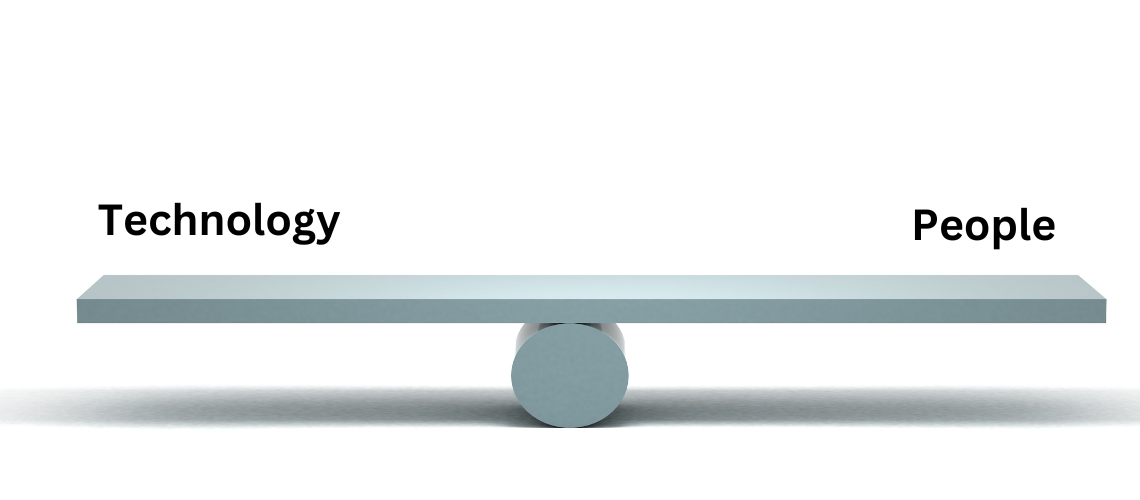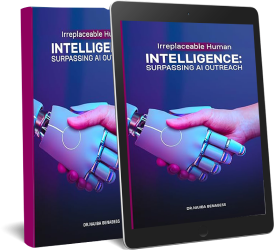In today’s business world, technology is advancing at an unprecedented pace, transforming the way companies operate and compete. However, as organizations strive to stay ahead of the curve, it’s crucial not to lose sight of the human element. Balancing technology and people is essential to achieving the bottom line and fostering long-term success. Here’s how to strike that balance effectively.
Understanding the Role of Technology
Technology has revolutionized virtually every industry, providing tools that enhance efficiency, productivity, and innovation. From automation and artificial intelligence to data analytics and cloud computing, technology enables businesses to streamline operations, reduce costs, and gain valuable insights. However, the rapid adoption of technology can sometimes overshadow the importance of human factors in the workplace.
The Importance of People in Business
While technology offers numerous benefits, people remain the heart of any organization. Employees bring creativity, critical thinking, emotional intelligence, and a sense of purpose that machines cannot replicate. Engaging and empowering your workforce is key to leveraging the full potential of technological advancements. Here are some reasons why focusing on people is essential
- Innovation: Human creativity and problem-solving abilities drive innovation. Employees who feel valued and engaged are more likely to contribute innovative ideas and solutions.
- Customer Relationships: Building strong relationships with customers relies on empathy, understanding, and personalized interactions that only humans can provide.
- Organizational Culture: A positive organizational culture fosters collaboration, motivation, and loyalty. This culture is built and maintained by people, not technology.
- Adaptability: People can adapt to new situations, learn new skills, and make nuanced decisions in ways that technology cannot.
Strategies for Balancing Technology and People
- Invest in Employee Development: As technology evolves, so should your workforce. Invest in training and development programs to help employees acquire new skills and stay current with technological advancements. This not only enhances their capabilities but also demonstrates your commitment to their growth.
- Foster a Collaborative Environment: Encourage collaboration between human and technological resources. Implement tools that facilitate teamwork, communication, and knowledge sharing. This ensures that technology complements human efforts rather than replacing them.
- Prioritize Employee Well-Being: Technology can sometimes lead to increased workloads and stress. Prioritize the well-being of your employees by promoting a healthy work-life balance, providing mental health resources, and creating a supportive work environment.
- Leverage Data Ethically: Use data analytics to gain insights and drive decision-making, but do so ethically. Respect employee and customer privacy and be transparent about how data is used. This builds trust and ensures that technology is used responsibly.
- Maintain Human Touchpoints: Despite the convenience of automation and AI, maintain human touchpoints in customer interactions. Personalize experiences and provide opportunities for customers to connect with real people when needed.
- Involve Employees in Technology Decisions: Involve employees in decisions about technology implementation. Gather their feedback, understand their needs, and ensure that new tools enhance their work rather than creating additional challenges.
Case Study: A Balanced Approach
Consider the example of a leading retail company that successfully balanced technology and people. By implementing advanced data analytics, the company optimized inventory management and personalized customer recommendations. Simultaneously, they invested in employee training programs, empowering staff to use these tools effectively. The result was improved operational efficiency, enhanced customer experiences, and a motivated workforce, ultimately driving higher profitability.
Conclusion
Balancing technology and people is not a one-time effort but an ongoing process that requires thoughtful strategy and execution. By investing in your employees, fostering a collaborative environment, prioritizing well-being, leveraging data ethically, maintaining human touchpoints, and involving employees in technology decisions, you can achieve the bottom line while ensuring sustainable growth. In the end, the most successful organizations are those that recognize the value of both technological innovation and human ingenuity.

